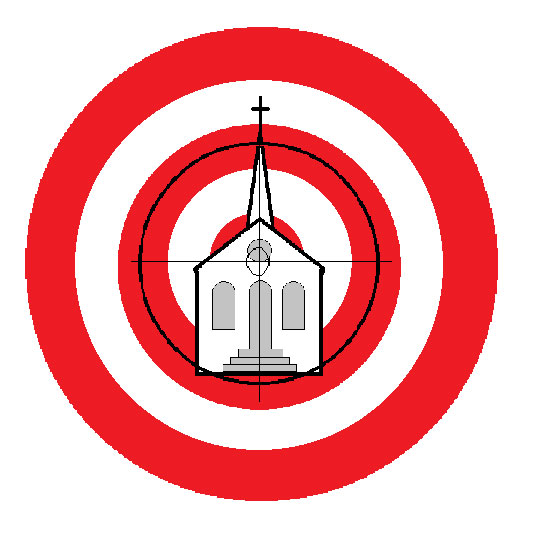Churches as Targets of Hate Crimes

But my foes are vigorous, they are mighty, and many are those who hate me wrongfully. ~ Psalm 38:19 (ESV)
Hate is nothing new. It is as old as sin – literally. The first murder was a religious hate crime: Cain was jealous because Abel’s sacrifice was favored by God, but his wasn’t.
Hatred based on religion has continued through the millennia since Cain killed Abel, as witnessed to by several verses in the Psalms. Jesus said the world would hate His disciples because it hates Him (John 15:18). Persecution of the Church began not long after Pentecost. Churches and Christians have been the targets of hate ever since. That is true even in the Land of the Free and the Home of the Brave, where the First Amendment means nothing to some of those who hate Christians and Jews.
Hate crimes by those who identify as Christians is definitely un-Christian. Jesus told us to “love your enemies” (Luke 6:27-35). But many times Christians attack Christians verbally over differences in doctrine and practice, also over nationality, ethnicity and race, even over a church’s position on social issues. Sometimes this escalates to violence.
While most attackers come from outside the targeted institution, some come from inside. The shooter at the YWAM house and the New Life Church in Colorado had been a former participant in both organizations who had turned against them.
Since at least 1822, African-American churches have been burned, bombed and shot up. In 2015, a young man with anti-Black feelings sat in on a mid-week Bible study at a historic Black church in Charleston, SC. At the end, he pulled out a handgun and killed the pastor and eight others.
Over the past two decades, the number of reported incidents of violence in churches has grown, including verified and suspected hate crimes. Many times the violence takes the form of vandalism , such as damaging statues and other exterior emblems. It can also move inside the building, such as with arson .
The building is not always unoccupied at the time of a hate crime. In August 2015, two churches were bombed in Las Cruces, NM within a half hour on a Sunday Morning, just before the service in one and during a service in the other. Fortunately, no one was seriously injured.
In light of this, what should we do? Pray, Predict, Prepare, Protect, Practice.
Predict
We must recognize and acknowledge the fact that our church can be the target of a hate crime. We can safely predict that someone at some time will say hateful things about our church and/or other churches in our community. And there is a strong likelihood that hate will be acted out. Knowing this, we can make and implement plans to prevent and respond to hate crimes.
What will hateful acts be? That depends on the minds and motives of the haters. Remember that Satan is behind all hate crimes, and he can inspire the imaginations of evildoers. It may be as simple as graffiti or threatening notes . It may be external damage and desecration. It can be serious damage to buildings, or vandalism inside with torn or besoiled books and other worship aids and damaged musical instruments. It can be arson .
At the extreme, a hate crime can be an attack on people in the church, ranging from eggs and tomatoes to shooting, stabbing and bombing.
Prepare
We don’t want to be paranoid, preoccupied with the possibility of threats, but we do need to be informed and aware. When we repair or upgrade the exterior of our buildings and self-standing structures (such as signs), we can make the surfaces easier to clean for removal of graffiti and thrown substances. We can put clear shatterproof shielding over the windows (especially stained glass ones) to prevent most breakage. We can make the doors sturdy enough that it would take a major effort to break them.
Protect
How else are we to protect the church buildings and people? Surveillance cameras may not deter a determined hater, but they could provide footage to identify perpetrators. Diligence in the routines of safety and security is the best means of protecting the church, the same measures that guard against burglary , hostile intruders , and vandalism.
Practice
Whatever we have planned for our response to a hate crime must be rehearsed, especially for a real-time (when the crime is happening) response. Drills practicing our actions will hone our skills, including taking care of the injured .
Pray
Praying is actually the first thing we do, and do all the way through, but here it is at the end so it will be the last thing read, and be remembered.
Pray for yourselves. Pray for a closer relationship with God. Pray that your lives will be lived in His will.
Pray for wisdom. Pray for God’s guidance in both the decisions and actions of your Safety/Security Committee .
Pray for protection. God is our shield and protector. His unseen armies are all around us. Satan can do nothing unless God allows him to.
Pray for your enemies. Hate crimes are a form of persecution. Jesus said, "Love your enemies and pray for those who persecute you" (Matt. 5:44). I believe someone prayed for Saul of Tarsus when he was persecuting the early church, and their prayers were answered.
This is also a prayer for our response to persecution, and translates into how we treat the persecutors. It does not negate our duty to protect, but it is parallel to humane treatment of prisoners of war.
Proceed
Find help and advice in preparing for and responding to hate crimes against your church through the training and resources of Sheepdog Church Security .




